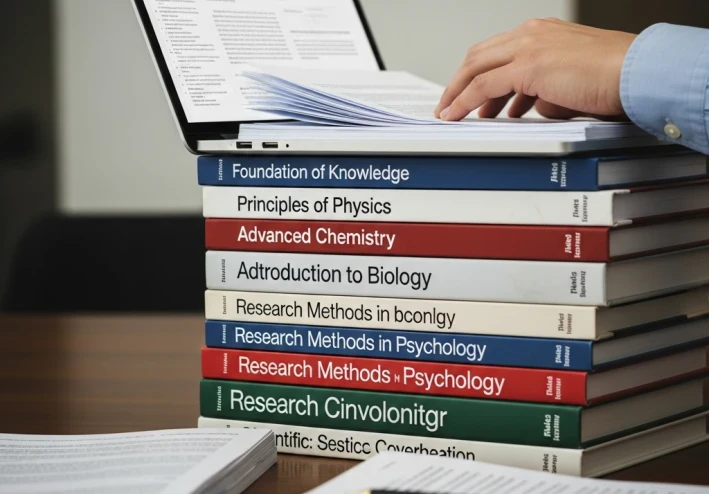
دليل الكتابة العلمية وصياغة ورقة بحثية ناجحة
دليل الكتابة العلمية وصياغة ورقة بحثية ناجحة
الكتابة العلمية هي شكل متخصص من التواصل مصمم لنقل المعلومات التقنية بوضوح ودقة وإيجاز إلى المجتمع العلمي. على عكس الكتابة الإبداعية، هدفها الأساسي ليس الترفيه، بل الإقناع والتوثيق والإعلام. إنها العمود الفقري للتقدم العلمي، حيث تتيح للباحثين مشاركة نتائجهم، والبناء على المعرفة الحالية، وخضوع عملهم لمراجعة الأقران.
جوهر الكتابة العلمية الجيدة هو الوضوح والدقة. فهي تتجنب الغموض واللغة الزخرفية والمصطلحات المتخصصة غير الضرورية. يجب أن تدعم الأدلة كل ادعاء، وأن يكون المنطق الذي يربط بين الفرضية والطرق والنتائج والاستنتاجات سلسًا وسهل المتابعة.
كيف تكتب ورقة علمية ناجحة
الورقة الناجحة هي التي يفهمها القراء ويصدقونها ويقدرون قيمتها. وهي تتبع هيكلاً موحدًا يعرف باسم IMRaD (المقدمة، الطرق، النتائج، والمناقشة)، والذي يوفر مسارًا منطقيًا للقارئ.
المقدمة: تمهيد للموضوع
الغرض: توفير السياق والمبرر لدراستك.
كيفية القيام بذلك: ابدأ على نطاق واسع من خلال تقديم مجال البحث العام وأهميته. ثم ضيق نطاق التركيز بمناقشة المشكلة المحددة أو الفجوة المعرفية. اذكر بوضوح سؤال بحثك أو فرضيتك وأوجز بإيجاز الغرض من دراستك. استشهد بأدبيات البحث الرئيسية بفعالية لإظهار كيف يتناسب عملك مع المعرفة الحالية.
قسم الطرق: اشرح منهجيتك
الغرض: وصف بالضبط ما فعلته حتى يتمكن باحث آخر من تكرار دراستك.
كيفية القيام بذلك: قدم وصفًا تفصيليًا وخطوة بخطوة للتجربة التي صممتها والمواد المستخدمة والعينات أو Subjects والإجراءات. استخدم صيغة الماضي واكتب بطريقة واقعية ودقيقة. هذا القسم يتعلق بـ ما فعلته، وليس بما كنت تفكر فيه.
النتائج: اعرض نتائجك
الغرض: الإبلاغ عن البيانات التي تم جمعها من تجاربك بشكل موضوعي.
كيفية القيام بذلك: اعرض نتائجك بشكل منطقي، باستخدام الأشكال (الرسوم البيانية، المخططات) والجداول لتصور البيانات الرئيسية. في النص، سلط الضوء على أهم الاتجاهات والملاحظات دون تفسيرها. لا تشرح لماذا حدث شيء ما؛ ببساطة اذكر ماذا حدث. استخدم صيغة الماضي.
المناقشة: فسّر المغزى
الغرض: تفسير نتائجك وشرح أهميتها وربطها مرة أخرى بمجال البحث الأوسع.
كيفية القيام بذلك: هذا هو القسم الأكثر أهمية في الورقة الناجحة. ابدأ بإعادة ذكر النتائج الرئيسية. ثم فسرها - ماذا تعني؟ قارن وقارن بين نتائجك وتلك الواردة في الدراسات التي استشهدت بها في المقدمة. ناقش أي قيود في دراستك واقترح اتجاهات للبحث المستقبلي. أخيرًا، اختم باستنتاج قوي وواضح يلخص الرسالة الرئيسية التي يجب أن يأخذها القارئ من عملك.
الملخص والعنوان: الانطباع الأول عن ورقتك
العنوان: يجب أن يكون محددًا وغنيًا بالمعلومات وموجزًا. إنه أول ما يقرأه أي شخص.
الملخص: نسخة مصغرة من ورقتك بالكامل (حوالي 250 كلمة). يجب أن يغطي بإيجاز المشكلة والطرق والنتائج الرئيسية والاستنتاج الرئيسي. كثير من الباحثين لن يقرأوا سوى هذا، لذا اجعله مؤثرًا.
مفاتيح النجاح:
الوضوح هو الملك: استخدم لغة بسيطة ومباشرة. تجنب الجمل الطويلة والمعقدة.
كن دقيقًا: اختر الكلمات ذات المعاني الدقيقة. كلمة "قياس" أو "تحديد الكمية" أفضل من "النظر في".
راجع ونقح: مسودتك الأولى ليست أبدًا مسودتك الأخيرة. راجع المنطق وسلاسة العرض، ثم نقح بقسوة من أجل القواعد النحوية والإملاء والوضوح.
اطلب التعليقات: اجعل الزملاء، خاصة أولئك خارج مجال تخصصك المباشر، يقرؤون مخطوطتك. إذا وجدوا صعوبة في فهمها، فسيكون هذا حال جمهورك أيضًا.
في الختام، الكتابة العلمية الناجحة هي مهارة تجمع بين البحث الدقيق والتواصل الواضح. من خلال الالتزام بهيكل IMRaD وإعطاء الأولوية للوضوح والدقة، يمكنك ضمان أن يقدم عملك مساهمة قيّمة ودائمة في مجال تخصصك.سواء في المجال الطبي او المجال التعليمي
































